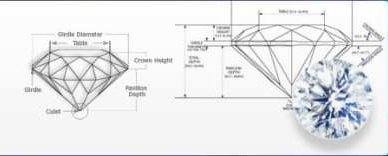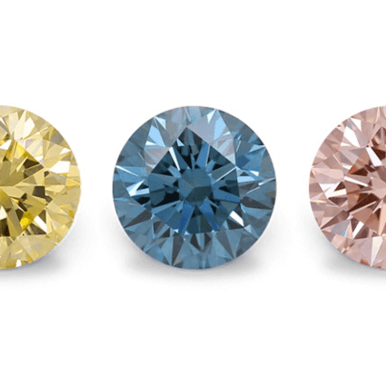Diamond ring styles
When you come to a point when a question "What ring style will suite me?" arises, most of the people tend to keep it classic, and they choose the solitaire ring.

Solitaire Ring
It’s the classic ring setting for an engagement ring. The reason is quite clear: There’s no other ring setting that draws the viewer's eyes so much to the center stone. Nothing’s distracting from the beauty of the diamond. Combined with its simplicity, this is what makes the solitaire ring setting so appealing!
Solitaire ring settings belong to the prong settings. And prongs are the little metal claws that keep the diamond in place. They’re so popular because they allow for a maximum amount of diamond exposure to the viewer's eye.
This means more light is able to pass through the diamond and get reflected back for us to see. Prong settings are therefore able to get the largest amount of bling out of a diamond!
Pros of a Prong Setting
- Elevates the diamond, making it more prominent and noticed
- Enables significant light to pass through the diamond—increasing the stone’s brilliance and fire
- Simple to clean and maintain
- Offers a classic, timeless look
Cons of a Prong Setting
- Can snag on clothing, furniture, and other materials, especially if high-set (a lower-set prong may be best for those with an active lifestyle).
- May loosen with wear (we recommend having the prongs inspected at least every two years to ensure the stone remains secure).
Pave Ring
The pavé ring, pronounced “pa-vay,” comes from the French word “to pave,” as in paved with diamonds. By closely setting small diamonds together with minimal visibility of the tiny metal beads or prongs holding the stones in place, the effect is one of continuous sparkle.
The jeweler typically drills holes into the ring, carefully places the diamonds into the holes, and finally forms tiny beads, or mini-prongs, around each diamond to secure them into the holes.
Pros of a Pavé Setting
- Highlights of the center stone
- Magnifies the ring’s overall brilliance with side stones
- Provides extra sparkle to a lower-set or less sparkly center stone
- Can be designed in a modern or vintage style
Cons of a Pavé Setting
- Sizing and resizing can be quite difficult if the ring is pavé set around the full band
- Although highly unlikely, minimal risk of losing side stones exists

Halo Ring
The halo setting refers to the placement of diamonds or other gemstones in a concentric circle or square around a center stone. The halo setting makes the center stone appear larger—a great option to boost the appearance of a small diamond—and it increases the overall sparkle of the ring.
A halo setting, then, can be a way to save money on a smaller-carat diamond while not sacrificing the overall appearance of the ring.
Pros of a Halo Setting
- Boosts the appearance of a smaller carat center diamond
- Enhances overall sparkle due to surrounding stones
- Securely holds and protects the center stone
- Supports and complements a variety of Diamond Shapes
- Contrast can be built with a halo of colored metal or gemstones
Cons of a Halo Setting
- Tiny side stones may become loose
- Resizing can be difficult depending on the number of side stones that line the band


Three Stone Ring
The three-stone ring is a versatile setting that can be used for engagement, anniversary, or any occasion. The three stones, set closely together, are said to symbolize the couple’s past, present, and future.
These stones can either be all the same size or, as is often the case, the center stone is larger than the two side stones. The most popular diamond shapes for this setting are the round brilliant cut and the princess cut.
Pros of a Three Prong Setting
- Maximizes on sparkle and brilliance
- Allows for multiple larger stones (including ones of different colors)
- Enhances appearance of center stone when paired properly with side stones
- Provides opportunity for personalization and color contrast
Cons of a Three Prong Setting
- Requires more cleaning and maintenance than a single stone design
- When paired poorly, the two side stones can overpower or distract from the beauty of the center stone















